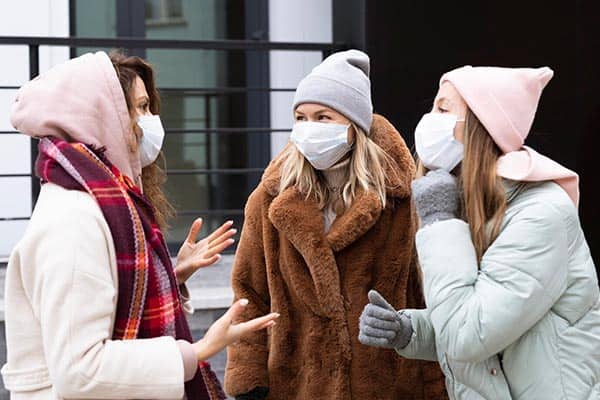During seasonal transitions with significant temperature fluctuations, the incidence of colds increases. Both children and adults with weakened immune systems are susceptible. The primary cause of colds and influenza is viral infection. Unlike bacteria, viruses cannot be "killed," so if the illness cannot be prevented, it's essential to help the body recover faster and alleviate symptoms.

What Are ARVI, Colds, and Flu, and How Do They Differ?
People often use these terms interchangeably. However, the international classification identifies two groups of illnesses related to colds: influenza and ARVI (Acute Respiratory Viral Infections). These conditions differ in their names and classification based on the causative agent.
A "cold" refers to the majority of acute respiratory illnesses (ARI). Simply put, a cold is a syndrome of inflammation in the upper respiratory tract caused by an acute respiratory infection. It is accompanied by symptoms such as malaise, runny nose, sneezing, coughing, and sore throat.
The common belief that colds are caused by hypothermia—like wet feet, drafts, or consuming cold drinks—is not entirely accurate. Medically, the causative agents of ARI (e.g., bronchitis, pharyngitis, laryngitis, rhinitis, tonsillitis) are non-specific viruses and fungi. Hypothermia can be a contributing factor, lowering immunity and facilitating the infection's entry. Inflammatory processes commonly affect the nose, sinuses, throat, larynx, bronchi, or multiple respiratory areas simultaneously.
Acute respiratory viral infections (ARVI) are not a single disease but a group of illnesses caused by different viruses (e.g., rhinoviruses, coronaviruses, respiratory syncytial viruses) with similar symptoms and progression.
Influenza is classified under ARVI and includes subtypes like influenza A and B, as well as various strains that constantly mutate, sometimes leading to epidemics. Influenza is the most dangerous type of respiratory illness, causing more severe symptoms, greater difficulty in recovery, and potential complications such as heart and lung conditions. According to WHO statistics, seasonal flu causes approximately 1 billion cases annually worldwide, including 3-5 million severe cases, with 290,000 to 650,000 fatalities.

What Unites Colds, Flu, and ARVI?
All three are caused by infections transmitted via airborne droplets, from person to person. You can catch them through direct contact with an infected individual or in crowded places (stores, malls, cinemas, markets) where viruses and fungi are concentrated.
Key Differences in Symptoms of Respiratory Diseases
| Symptom | Flu | ARVI | Cold |
|---|---|---|---|
| Sudden onset | Always | Gradual over 2-3 days | Rare |
| Body temperature | Often 39-40°C | May reach 38°C | Rarely elevated |
| Runny nose nasal congestion | Common | Always | Prominent |
| Sore throat | Common | Common | Pronounced |
| Cough | Common | Sometimes | Sometimes |
| General intoxication | Severe | Unusual | Unusual |
| Possible complications | Pneumonia, cardiovascular diseases | Bacterial infections, sinusitis, otitis | Unlikely |
While symptoms overlap, colds usually resolve on their own within 2-3 days if immunity is strong, unlike the flu or other viral infections, which last longer.
Can Prevention Work?
The severity of symptoms and risk of complications are directly linked to the immune system's condition. Stronger immunity offers better resistance to infections attacking the throat, ears, nose, and bronchi. Hypothermia or temperature drops can kill about 50% of the beneficial microorganisms on nasal mucosa, reducing the body's defenses.

Tips for Effective Prevention:
- Hygiene and Ventilation: Regular hand-washing and airing out rooms reduce infection risks.
- Healthy Sleep and Nutrition: 7-9 hours of sleep and a balanced diet, including "slow" carbohydrates and essential nutrients, support immunity.
- Hydration: Drinking at least 2 liters of water daily aids in toxin removal and supports immune function.
- Physical Activity and Stress Management: Regular exercise and stress reduction strengthen the body’s defenses.
- Social Distancing: During flu outbreaks, avoid crowded areas and close contact, especially with sick individuals.
- Hardening and Alcohol Limitation: Gradual acclimatization to cold strengthens immunity, while alcohol weakens it.
- Vaccination: Vaccines adapted to new flu strains remain the most reliable way to reduce severe illness and complications.
Supplements and Medications
Key supplements like Vitamin C, Zinc, Echinacea, Spirulina, and Ginseng support the immune system. Medications such as immunostimulants and antivirals (e.g., interferons) can be effective when taken early in an outbreak. While no vaccine exists for ARVI, flu vaccines are updated annually and recommended for all, especially children and the elderly.




